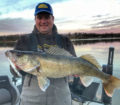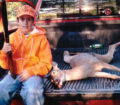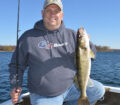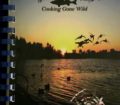By Steve Weisman
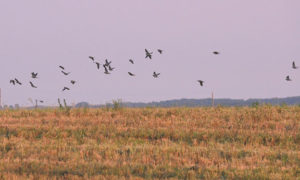
(photo courtesy Iowa DNR) An early morning flock of doves.
What a crazy spring and summer we have had. It seems like just yesterday that we were worried if the ice would go off for walleye opener! Then, of course, much of our summer was filled with river and lake flooding issues from the heavy rains. Even now in August, when we usually don’t get a lot of rain, we have gotten two and three inch rains and more!
It’s kind of put me in a little bit of a haze-please don’t say it’s age. Just last week I realized that Labor Day Weekend was almost here, and then it dawned on me. Our hunting seasons are beginning Saturday, September 1!
First, there is the dove season. This will be the seventh dove season since the dove hunting season was approved in 2011, and it has become a popular early hunting season for many hunters. The hunting should be good the first few weeks of September. Here are a few thoughts as you hit the field.
For doves, pack a lot of shells. Even the best shooters will most likely miss more than they hit because dove are incredibly tough to hit and rarely give hunters an “in your face” shot. Instead, they come zipping and zinging like little missiles! Taking longer “hope” shots do nothing but burn up shells and wound birds.
Mourning doves prefer feeding on open ground and eat a variety of seeds and grains. As a result, several DNR wildlife areas in each county have food plots that have been planted to attract doves. Portions of these food plots have been cut down/disked a few days prior to the season to help attract doves to the area.
Expect to have other hunters in the same field, so it is important to know where the other groups are and to be safely set up. An ideal spot would be a harvested field (sunflower fields are awesome) with a supply of water (pond or slough) close by.
Best hunting times are early morning (the first two hours) and early evening (the last 1-2 hours).
The goal is to set up along the downed food plot in the remaining standing corn, sunflowers, tall grass or maybe a fence row.
A 16-day September teal season also begins Sept. 1. Blue-winged teal are
abundant and begin migrating through Iowa in late August and peak in mid-September. Beginning on September 1st allows the use of all days available, which increases the likelihood of teal migrations occurring during the season, while also providing the longest rest period possible before the opening of the regular duck season. Even the early teal season depends on weather. For instance, looking back during 2014 and 2015, little cold fronts would move teal through Iowa throughout the early season. However, the weather didn’t cooperate as well in 2016 and 2017, and the number of teal bagged dropped significantly.
Data collected from the four-year experiment indicates there has not been a negative impact on teal, wood duck and local mallard populations. With a teal season, Iowa can utilize additional days and a more flexible season structure. A bonus – these 16 days do not count against the regular duck season.
Teal like shallow water, and with the August rains, there should be some sheet water along grassy areas and in fields where the teal will congregate. The crazy thing is each day might bring a push of teal. Just a tiny cold front north of here can send teal south, and at the same time, a tiny cold front here will push out teal that have been around here. So, unless you get lucky, you have to get out often to catch the migrating teal.
In addition, both the dove and teal seasons are a good time to get your hunting dog ready for the retrieving season. Plus, having a dog increases the chance of not losing downed birds. It also gives the hunter a chance to work on discipline and basic commands. However, the temperatures are usually warm, so make sure to bring plenty of water for both hunter and hunting dog.
Two upland hunting seasons also begin on September 1 with the squirrel and cottontail rabbit seasons. Fox squirrels can be found anywhere there are a few acres of trees, but gray squirrels are generally limited to the heavily forested areas in eastern and southern Iowa. Hunting opportunities for squirrels are excellent because the competition is low and hunters could have the area all to themselves. Because of the lack of competition, squirrel hunting is a good way to introduce novice hunters and youth to the outdoors. It also benefits experienced hunters by honing their skills before other seasons open.
As for cottontails, areas with shrubs, brush piles or field edges. Most of the hunting takes place later in the fall and winter.
So, here we go again…the seasons are changing with so many options…the beginning of fall fishing and these early hunting seasons. Think you can do it all?

